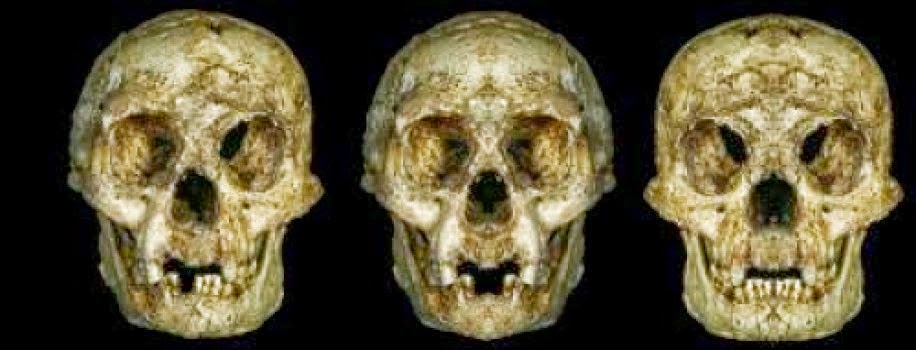Homo erectus on Java was already using shells of freshwater mussels as tools half a million years ago, and as a 'canvas' for an engraving. An international team of researchers, led by Leiden archaeologist José Joordens, published this discovery on 3 December in Nature. The discovery provides new insights into the evolution of human behaviour.
Detail of the engraving on fossil Pseudodon shell (DUB1006-fL) from Trinil [Credit: Wim Lustenhouwer, VU University Amsterdam]
Not only Homo sapiens made engravings "Until this discovery, it was assumed that comparable engravings were only made by modern humans (Homo sapiens) in Africa, starting about 100,000 years ago," says lead author José Joordens, researcher at the Faculty of Archaeology at Leiden University.
A team of 21 researchers studied hundreds of fossil shells and associated finds and sediments from the Homo erectus site Trinil, on the Indonesian island of Java. The shells are part of the Dubois Collection that has been held at the Naturalis Biodiversity Center since the end of the 19th century.
The shells were excavated by the Dutch physician and researcher Eugène Dubois, the discoverer of Pithecanthropus erectus -- now known as Homo erectus. Engravings older than weathering The discovery of an engraved geometrical pattern on one of the shells came as a total surprise.
The zig zag pattern, that can only be seen with oblique lighting, is clearly older than the weathering processes on the shell arising from fossilisation.
The study has excluded the possibility that the pattern could have been caused by animals or by natural weathering processes and shows that the 'zigzag' pattern is the work of Homo erectus.
The fossil Pseudodon shell (DUB1006-fL) with the engraving made by Homo erectus at Trinil [Credit: Wim Lustenhouwer, VU University Amsterdam]
Five hundred thousand years old By applying two dating methods, researchers at the VU University Amsterdam and Wageningen University have determined that the shell with the engraving is minimally 430,000 and maximally 540,000 years old.
This means that the engraving is at least four times older than the previously oldest known engravings, found in Africa. Purpose or meaning of the engraving? "It's fantastic that this engraved shell has been discovered in a museum collection where it has been held for more than a hundred years. I can imagine people may be wondering whether this can be seen as a form of early art," says Wil Roebroeks, Professor of Palaeolithic Archaeology at Leiden University.
He was able to finance this long-term research with his NWO Spinoza Prize. "At the moment we have no clue about the meaning or purpose of this engraving."
Inside of the fossil Pseudodon shell (DUB7923-bL) showing that the hole made by Homo erectus is exactly at the spot where the adductor muscle is attached to the shell [Credit: Henk Caspers, Naturalis, Leiden, The Netherlands]
Early human-like mussel collector
This research has shown that these early human-like people were very clever about how they opened these large freshwater mussels; they drilled a hole through the shell using a sharp object, possibly a shark's tooth, exactly at the point where the muscle is attached that keeps the shell closed.
"The precision with which these early humans worked indicates great dexterity and detailed knowledge of mollusc anatomy," says Frank Wesselingh, a researcher and expert on fossil shells at Naturalis.
The molluscs were eaten and the empty shells were used to manufacture tools, such as knives.
Possible follow-on research This discovery from the historical Dubois collection sheds unexpected new light on the skills and behaviour of Homo erectus, and indicates that Asia is a promising and, so far, relatively unexplored area for finding intriguing artefacts.
From the Netherlands, researchers at Leiden University, the Naturalis Biodiversity Center, the Vrije Universiteit Amsterdam, the universities of Wageningen and Delft and the Cultural Heritage Agency of the Netherlands were involved in the research.
This research is being financed by research funding from the NWO Spinoza Prize.
The shell with the oldest known human engraving will be on display in the Naturalis museum from 4 December onward.
Source: Leiden University [December 03, 2014]





